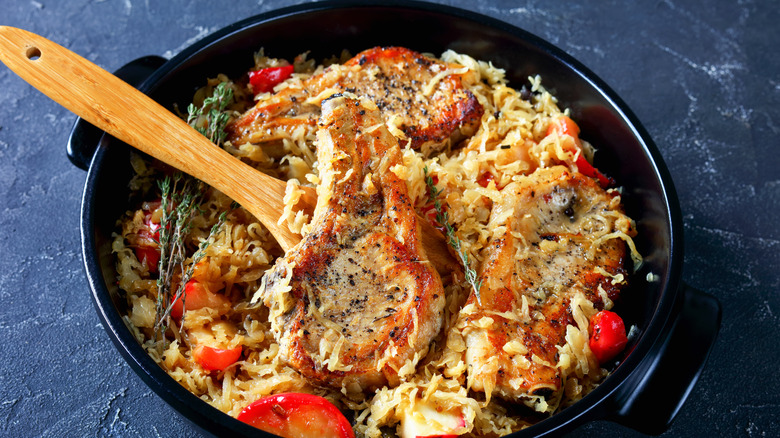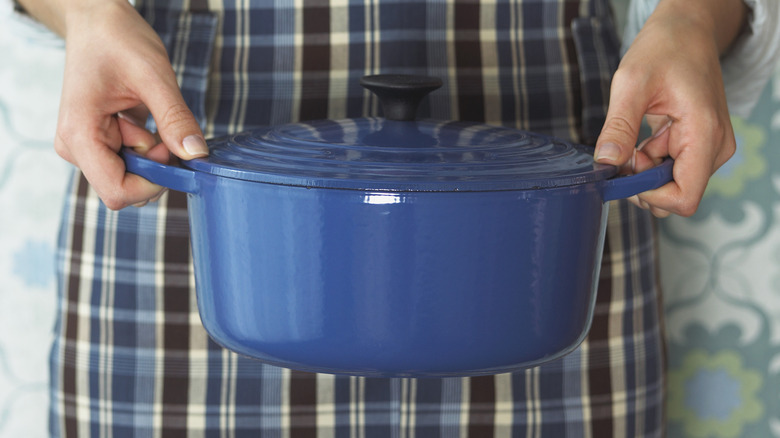Why You Probably Don't Need A Braiser
It's 4:30 in the afternoon, and you have just wrapped up work. You have company coming for supper at 6 pm. You want to serve your guests something made with love and comfort. Yet, there is simply no time for a full spread. A one-pot meal is the way to go. In just under an hour, you can get braising and have time to set the table. But why can't you just throw a bunch of ingredients together and roast them in the oven? Well, you could. But braising adds a little extra finesse.
Different from stewing, which is the method of cooking ingredients submerged in liquid, and even from covered roasting, where no liquid is used at all — braising is somewhat a hybrid of the two techniques. You start by browning your food in a drizzle of your fat of choice. Then the pan is covered to finish cooking on the stovetop or in the oven. If meat is involved, it's likely resting on a bed of vegetables soaking up all those meaty bits and a small amount of liquid such as red wine or stock. Other methods associated with braising are fricasseeing and pot-roasting. All of this results in a juicy meal bursting with flavor.
So, your recipe calls for a braising pan. But what if you don't have one? Where there is a will, there is a way.
No braiser, no problem
Much like its big sister, the Dutch oven, a braising pan is usually made from enameled cast iron. Both have handles on their sides and tight-fitting lids. Yet, while the Dutch oven is deep, a braising pan is shallower with a rounded-out bottom. The braising pan is designed this way so that the shorter walls prevent steaming while you brown or lightly fry. The actual cooking surface is also big enough to fit a whole chicken in there if you want to. And the braising pan is easily transferrable from the stovetop to the oven for finishing the cooking process.
But unless you're braising like a boss, you may have all the tools at your disposal within your current collection of cookware. The key to a perfect braise is the tight-fitting lid and that your cooking vessel is oven safe. If you do have that aforementioned Dutch oven, go for it. Just make sure that your oven rack is set low enough to pop it into the oven for the final cooking step. Or, opt for a one-two punch. Start with a frying pan for the browning step before transferring it to a Dutch oven or another baking dish. And, if your dish or pan doesn't have a lid, aluminum foil offers that tight seal too.
If you have a storage room, a dedicated braising pan is certainly handy. But now you know there's more than one way toward braising perfection.

